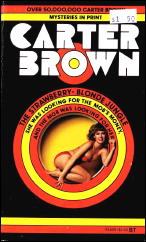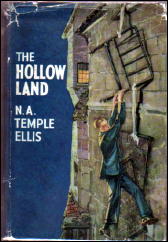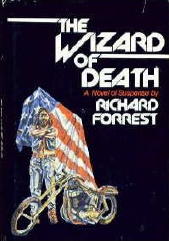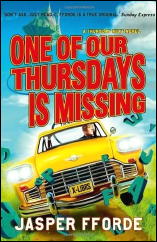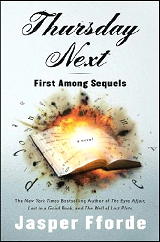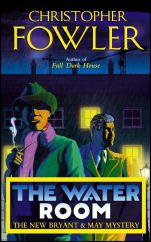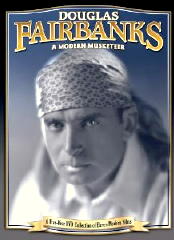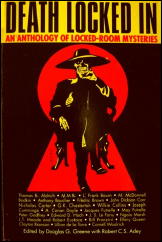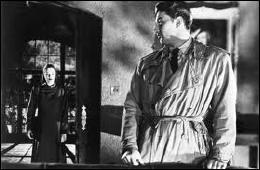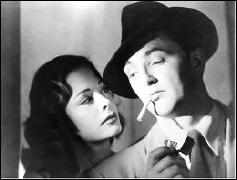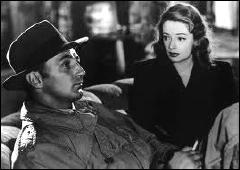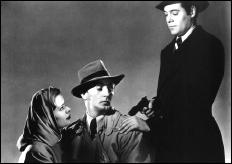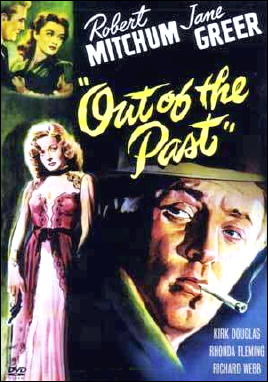AN ORGY OF DEATH:
Sex in the City in Alice Campbell’s Desire to Kill
by Curt J. Evans
ALICE CAMPBELL – Desire to Kill. Farrar & Rinehart, US, hardcover, 1934. Collins Crime Club, UK, hardcover, 1934.
In his interesting and influential but often rather one-sided analysis of English detective novels and thrillers between the wars, Snobbery with Violence: English Crime Stories and Their Audience (1971), Colin Watson portrays the Golden Age English mystery as quite straight-laced, sexually speaking, with blushing crime fiction writers of the day able to bring themselves to refer only “obliquely†to “coital encounters.â€
“The political tone [of the between-the-wars English mystery novel] was conservative save in a handful of instances,†pronounces Watson. “As for morals, it would be difficult to point to any other single branch of popular entertainment that conformed more strictly to current notions of decency. […] An almost Victorian reticence continued to be observed in crime fiction for decades after treatment of unsavory topics had come to be accepted, within limits, as a legitimate feature of the straight novel.â€
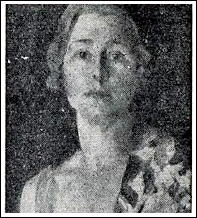
Colin Watson likely never read Alice Campbell’s 1934 crime novel Desire to Kill.
Admittedly, the novel is set in France (specifically Paris), where many English readers no doubt could more easily accept the presence of moral decadence in human life. Still, the plot itself quite strikingly involves elements (drugs, homosexuality, prostitution and sexual voyeurism) that would be right at home in the unbuttoned and unzipped modern mystery.
Alice Campbell (1887-?) herself was an American, though, like John Dickson Carr, she is associated with the English school of mystery. Originally she came from Atlanta, Georgia, where she was part of the socially prominent Ormond family. (Ormond was her maiden name.)
Campbell moved to New York City at the age of nineteen and became a socialist and women’s suffragist (this according the blurb on a 1939 Penguin paperback — evidently Penguin did not deem it necessary to shield potential readers from knowledge of this author’s less than conservative background). She moved to Paris before World War One, married the American-born artist and writer James Lawrence Campbell and had a son in 1914. By the 1930s (possibly sooner), the family had left France for England, where Campbell continued writing crime fiction until 1950 (the year The Corpse Had Red Hair appeared).
Campbell’s first mystery novel was Juggernaut, a highly-praised tale of the murderous machinations of a villainous doctor. (The story was adapted into a film starring Boris Karloff in 1936.) Throughout the rest of the pre-WW2 period, most of her crime tales were set in France.
Desire to Kill is one of the French novels. Like many of Campbell’s crime stories, it is really more a tale of suspense, though there is some detection in the form of attempts by a couple amateur investigators to pin the crime on the true villain. Dorothy L. Sayers praised the novel “for the soundness of the charactersation and the lively vigor of the writing,†which she thought helped to lift the narrative out of “sheer melodrama.â€
And melodramatic the tale is! The opening sequence, which concerns the events at socialite heiress Dorinda Quarles’ bohemian drug party, is well-conveyed. Sybaritic “Dodo†Quarles imbibes deeply and frequently at the well of moneyed decadence:

“The girl was by all accounts coarse, flamboyant, untrammeled by scruples or breeding; indiscriminate in love, and with a capacity for drink which led her to the open boast that, like a certain gentleman of Half-Moon Street, she never breakfasted, but was sick at eleven….â€
Dodo’s latest wicked pash is the cult-like new religion of the Bannister Mowbray, obviously a charlatan and a degenerate, at least in the eyes of the respectable:
“Rumour had it he came of a good Highland family, his mother a Greek; that in a remote past he had been sent down from his university for dubious practices. At all events he was known to have delved deep into mysteries the normal being eschewed, and to have founded a cult which, after being hounded from place to place, was now domiciled in Corsica. Just what went on in the circle of his initiates no outsider could definitely state, but credible report declared the man’s readiness to prey on the infatuated disciples who clung to him with a strange devotion.â€
Bannister Mowbray’s current “henchman and slave†is Ronald Cleeves, the handsome son and heir of Lord Conisbrooke. The author compares him, in a suggestive image, to a “pure Greek temple…invaded by a band of satyrs.â€
Later on Campbell’s amateur detective, the brash, American-born freelance journalist Tommy Rostetter, visits the two men at Ronald’s Parisian abode and finds them “wearing dressing-gowns†and sitting “close together, in earnest discussion over bowls of café au lait.â€
Other characters in the novel — all guests as Dodo’s party — include:
Peter Hummock, originally of South Bend, Indiana. “Ranked as the most pestiferous social nuisance in Paris,†Hummock nominally deals in antiques and designs tea-gowns “for middle-western compatriots†but spends most of his time “in a tireless dash from one gay function to another, impervious to snubs, detailing scandal.â€
Mrs. Cope-Villiers, “familiarly known as Dick…a reputed addict to cocaine.â€
“The glum and taciturn Australian poetess, Maud Daventry.†A neighbor of Tommy’s (based on Gertrude Stein?), she first is mentioned in Campbell’s earlier Tommy Rostetter mystery, The Click of the Gate (1932). Tommy has “nothing against her, little alluring as was her soggy complexion, mannish dinner-jacket, and untidy mop of hair invariably flecked with cigarette-ash.â€
Announcing that Dodo’s party guests have consumed a powerful hallucinogenic drug, Bannister Mowbray promises them the thrill of intense dreams:
“They will tend toward wish-fulfillment, of course, but the character will vary with the individual. All I can predict is that if any one of you cherishes a desire ordinarily forbidden, he may…taste an illusory joy of accomplishment.â€
During the period when all the guests at Dodo’s party are ostensibly in drug-induced stupors, Dodo is stabbed to death—a rather Manson-like culmination of events!
Apparently someone indeed had cherished an ordinarily forbidden desire, a desire to kill; and its accomplishment in those dark hours was not at all illusory.
When a woman he believes to be innocent is implicated in Dodo’s murder, Tommy investigates to discover what truly happened at this decadent affair. He finds that the dead Dodo is not missed:
“Who cares a hoot if she did stick a knife into the worthless bitch?â€
“David!â€
“Well, what was she, then? You tell me a nice name for her.â€
Despite encountering indifference and resistance, Tommy perseveres in his investigation and eventually discovers an amazing answer to his problem. Proving it, however, proves a perilous endeavor indeed for him.
Much of the later part of the novel involves goings-on at a house of prostitution where, for a price, the madam allows those voyeurs who like to look but not touch access to strategically placed peepholes, so that they may watch the house’s illicit couples coupling.
Though Campbell never directly describes sexual acts, reticent she is not in Desire to Kill. In terms of subject matter the novel certainly offers something outside the beaten Golden Age track — and the mystery is not at all a fizzle either. It is herewith recommended as an antidote to conventional genre wisdom and for its sheer entertainment value.
CAMPBELL, ALICE (Ormond). 1887-1976?
* Juggernaut (n.) Hodder 1928 [France]
* Water Weed (n.) Hodder 1929 [England]
* Spiderweb (n.) Hodder 1930 [Geoffrey MacAdam; Catherine West; Paris]
* The Click of the Gate (n.) Collins 1932 [Tommy Rostetter; Paris]
* The Murder of Caroline Bundy (n.) Collins 1933 [England]
* Desire to Kill (n.) Collins 1934 [Tommy Rostetter; Paris]
* Keep Away from Water! (n.) Collins 1935 [France]
* Death Framed in Silver (n.) Collins 1937 [Insp. Headcorn; Colin Ladbroke; England]
* Flying Blind (n.) Collins 1938 [Tommy Rostetter; England]
* A Door Closed Softly (n.) Collins 1939 [Alison Young; Colin Ladbroke; England]
* They Hunted a Fox (n.) Collins 1940 [Insp. Headcorn; Alison Young; Colin Ladbroke; England]
* No Murder of Mine (n.) Collins 1941 [Insp. Headcorn; England]
* No Light Came On (n.) Collins 1942 [Geoffrey MacAdam; Catherine West; Paris]
* Ringed with Fire (n.) Collins 1943 [London]
* Travelling Butcher (n.) Collins 1944 [England]
* The Cockroach Sings (n.) Collins 1946 [Insp. Headcorn; England]
* Child’s Play (n.) Collins 1947 [England]
* The Bloodstained Toy (n.) Collins 1948 [Tommy Rostetter; Insp. Headcorn; England]
* Veiled Murder (n.) Random 1949 [see Comment #6]
* The Corpse Had Red Hair (n.) Collins 1950 [England]
— The bibliography above was taken from the Revised Crime Fiction IV, by Allen J. Hubin.
